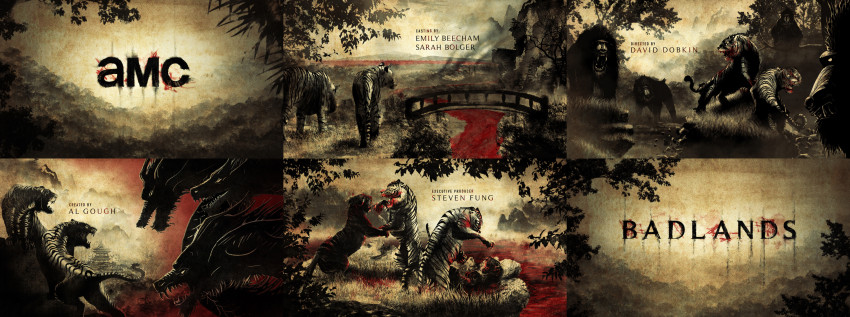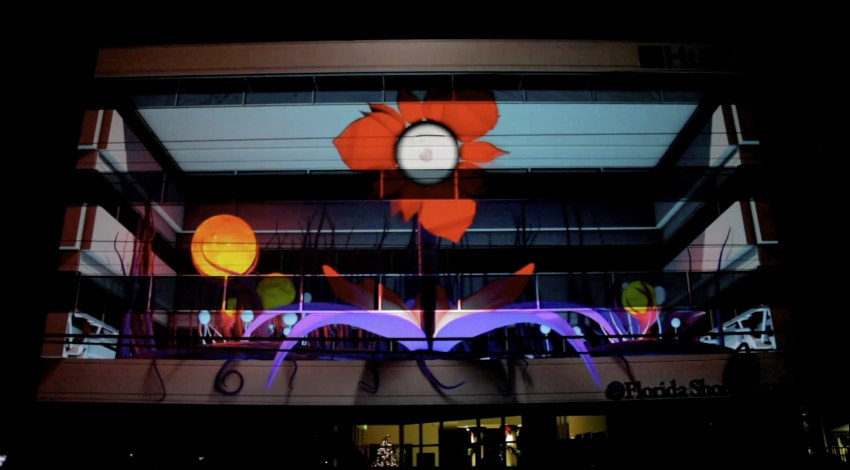Editor’s note: This is part of a series of school profiles on Motionographer. The following profile was compiled in the fall of 2015.
Founded in 1931, Ringling College of Art & Design has long been heralded as a leading institution for the study of animation. Its Motion Design BFA program was established in 2009 and has quickly earned a reputation for producing promising students.

The forthcoming Basch Visual Arts Center at Ringling College of Art & Design
70% of Ringling students choose to live on its 48-acre campus located in the heart of sunny Sarasota1. Between classes, they can hit the beach or sample Sarasota’s growing arts and culture scene.
| Location | Sarasota, Florida (USA) |
| School Population | 1,300 students from 65 countries2 |
| Motion Design Population | About 130 students |
| Dept. Head | Ed Cheetham |
| Programs of Study | BFA (undergraduate) |
| Average Undergraduate Tuition & Fees | Tuition $38,170 Room & Board: $13,762 |
1 Source: Campus Life
2 Source: 2015-2016 Fact Sheet
Q&A with Ed Cheetham, Head of the Motion Design Department
Why would a student choose Ringling College of Art & Design over another institution?
Let me begin to answer that question with a quote from one of our industry leaders:
“I was blown away by the level of talent being developed and nurtured at Ringling. And not just with the student body. Ed Cheetham has assembled a dream team of industry veterans who are now pouring their passion for motion design into the next generation of media professionals, all supported by a state of the art facility that rivals the best I’ve seen anywhere.”
— David Herbruck, President of LoyalKaspar
The structured curriculum, dedicated faculty and latest technology and facilities are what make the Motion Design program at Ringling College extraordinary.
What makes Ringling unique is that our freshmen are immersed in their major from day one. This guarantees each student receives four full years of an intense Motion Design education and industry focused preparation — and is one reason why our graduates are so highly recruited. Students select their major when they apply and enter into a specially designed curriculum for their chosen field of study. Throughout their four years at Ringling, students are transformed into practice-ready professionals while also developing a strong network of lifelong friends and future colleagues.

Annual drawing workshops on the beach
Another undeniable advantage of studying at Ringling is the sense of community. We are a community cultivated by our traditional college campus environment and the incredible number of student support services. Small class sizes (averaging around 14 students) allow the faculty to provide a great deal of individualized attention.
Faculty also maintain a high level of professionalism within the classroom, and that professional expectation is supported by a deep camaraderie between students wanting to encourage, as well as challenge one another.
This builds a strong bond of trust between the students and faculty, translating into a focused and engaging learning environment.

Design for Badlands title sequence by Jacob Ferguson
Can you explain Ringling’s approach to motion design education?
We transform the classroom into a professional studio environment. In fact, we designed the major to replicate a working motion design production studio.
All of the equipment and facilities a student would need to complete their project are on a single floor, including flexible collaborative spaces, computer labs, a Cintiq lab, a stop motion studio, a green screen studio, and a full audio production studio. We provide the student with an environment that rivals the best motion design spaces in the country. This atmosphere supports and enhances the creation of professional quality work, preparing students for seamless entry into the motion design industry.

Baltimore Orioles jumbotron client project
At Ringling, we prepare students as motion design generalists. We foster a diverse knowledge in all aspects of the production process – ideation through animation. A broad range of client-based projects, coupled with opportunities for experimentation and exploration, give each student a range of design challenges that hone their creative problem-solving skills.
Each semester, students take courses in Concept Development, Design and Animation. The animation course sequence includes techniques such as stop motion, traditional animation, 2D and 3D computer animation, and compositing and visual effects. To complement these motion design courses, students choose from numerous electives to explore and develop additional creative talents.
To prepare them for the challenges they will face in the industry, students are presented with the same design challenges that their professional counterparts face, and course projects are designed to bring real-world clients into the classroom. Our students have collaborated with TV Land, Baltimore Orioles, Sarasota Film Festival, and PBS.

Experimental thesis examples
In addition to solving today’s client-based design challenges, students are provided with a supportive environment to develop experimental thinking by questioning, “What’s next?” We recognize that the ability to play and explore new creative possibilities is an integral part of a motion designer’s responsibility. That’s why it is so important that the senior thesis experience is divided into two distinct projects: one semester provides an opportunity for experimentation, while the second semester maintains a client-based focus.
As the head of the motion design department, what do you look for in faculty?
As a department head, I look to build a diverse team of faculty, all with broad understanding of the industry, but each with their individual strength and area of expertise.
I look for designers and animators with a passion for their own career and an excitement to share their knowledge and experience to inspire others to find and develop their own passion. These are the faculty who are shaping the future of motion design.

The HuB Projection, junior class collaborative project
Students are more engaged with instructors whose work they respect and admire, and they trust faculty who have proven successful in the industry. I look for faculty who are caring and approachable, and who affirm that they are still learning about their craft. There is a contagious energy that emanates from those faculty that see themselves as lifelong learners that ignites the spark of curiosity in their students, leading to questions, explorations, discoveries, and ultimately knowledge.
What’s an area that you’re currently working to improve at Ringling?
Our curriculum is under constant review and enhancement. At the end of every semester, the department evaluates student work and identifies ways to improve each course’s content and delivery. Through a constant dialogue with industry professionals and recruiters, we assess the relevance of the projects, techniques and software, all with an eye on industry practices and professional expectations.
“Liars Need Good Memory,” James Heredia (2014)
The Department of Motion Design is still a relatively new major. Launched in 2009, we graduated our first class in 2013, and we’ve already begun to make an impact in the industry by placing graduates at some of the top studios and companies in the country. Among them, Troika, LoyalKaspar, LinkedIn, The Mill, MPC, Weiden+Kennedy and Disney have all hired graduates directly from our program. We continue to expand our relationships with studios and industry professionals and are working hard to bring more visiting artists to campus to interact with our students.
Additionally, I look to expand our elective course offerings. Motion Design is a broad industry, so we are continuing to develop a wider range of courses such as Project Management, Creative Coding, Advanced Audio Production, Advanced Visual Effects and Virtual Reality.
In terms of content, I would like to find more ways to incorporate motion design’s ability to address social issues and explore ways to use motion design to instigate change.
What kinds of students do best at Ringling?
As I tell my Motion Design freshmen, there are three qualities that we require of them: Respect, Openness, and Engagement. These are qualities that will allow them to be successful at Ringling and throughout their career.
Respect is the foundation for building a positive learning environment.
The culture of the department revolves around “360 degree” respect. No exceptions.That means that students must always demonstrate respect for each other, the facilities and the faculty. This belief fosters a safe environment, where one can grow and express one’s self without fear of personal criticism or failure. Each student is a valuable member of the Motion Design family.
Openness encourages new ways of thinking and enables the experience of new ideas, new situations and new approaches to solving problems creatively.
This open environment allows students to realize that there is not just one, but multiple right answers to any given question. Students are able to identify new talents and interests because they allow themselves to explore new things. We are a community of learners, and it’s freeing to embrace the ‘not knowing.’
Engagement is just saying “yes” when an opportunity presents itself.
Students enhance their college education through involvement with department programs and activities building strong personal networks through shared participation and interaction. We provide and encourage a wide range of opportunities including visiting artist workshops and recruiter presentations, attendance at professional conferences, entry into national design competitions, mentoring programs, drawing workshops, participation in our motion design student club ‘Designimators,” and regular department mixers.
The students that exhibit these three qualities capture the spirit of being a true learner and tend to be more productive, increasing the quality of the work produced. They are typically more positive, less stressed and find that they are surrounded and supported by other positive, like-minded students. Engaging in these numerous networking opportunities is one of the biggest benefits of a collegiate environment.
“Listen,” Marisabel Fernandez and Alexander Bernard (2014)
Where do you see the future of motion design headed and how is Ringling preparing students for that trajectory?
Motion Design will permeate all forms and methods of communication. Everything will become a ‘screen,’ whether in actuality or virtually. Immersive Environments, Augmented and Virtual Reality and Interactive are all areas where Motion Design will flourish. Motion Designers will be critical members on teams that create content, structure and functionality to all of these emerging fields.
There is an art to crafting effective images, and it falls back to the understanding of communication design principles. In the future, whether it is on the next evolution of the iPad, or direct input into the brain through electrical implants, the foundation for communication will be the same: know your audience, distill information to the essential, structure content so your visuals are clear and information is not lost, use whatever technique strengthens your message, get to the point quickly, say things in a new way, and learn whatever you need along the way to make it happen.
That’s exactly what we are teaching, and that’s why our students are prepared for whatever the future holds.
“Ephemeral,” Pat Vadanathorn (2014)
Student Perspectives
Allison Maier (Motion Design, Class of 2016)
When looking into enrolling at Ringling, I knew I wanted an education that would lead to a well-paying job that I loved. The Motion Design Department provides an expansive major that allows graduates to choose from vast employment opportunities.
I find the instructors are well versed in their areas of study and provide a type of learning environment I haven’t found elsewhere. Their passion for Motion Design is infectious and nothing is better than learning from people that truly love what they do. I get the chance to work side by side with faculty and peers alike that inspire and amaze me daily.
Mauroof Ahmed (Motion Design, Class of 2013)
What I really loved about Motion Design at Ringling was the strong foundation in design and animation. Having state-of-the-art technology at our disposal, along with amazing classmates who is always pushing you to do the best work, professors who are detail oriented, honest in their feedback, and projects that allowed us to collaborate across majors, really prepared me for the collaborative work environment after graduation.
Siovean Lehner (Motion Design, Class of 2016)
There’s a great sense of integration between classes, and the professors present real world client projects for us to understand the industry’s pipeline. Ringling’s Motion Design department presents this so clearly that it’s almost unreal how prepared it makes students for the real world. It’s a huge plus that the faculty is also working within the industry because we are exposed to first hand experiences.
Viraj Ajmeri (Motion Design, Class of 2015)
After the 4 years I have spent at Ringling, I can say Motion Design department isn’t just another department, it’s a family. A family that supports you in all your endeavors till you achieve what you are trying to reach in our broad industry.
The faculty has developed a rigorous curriculum for a student to thrive in their desired field, whether it is design, animation, VFX, etc. Through this curriculum and unique problem-solving opportunities, the students form a strong camaraderie to support and strengthen each other. I have built an incredible relationship with this family and could not ask for a better Motion Design curriculum.




